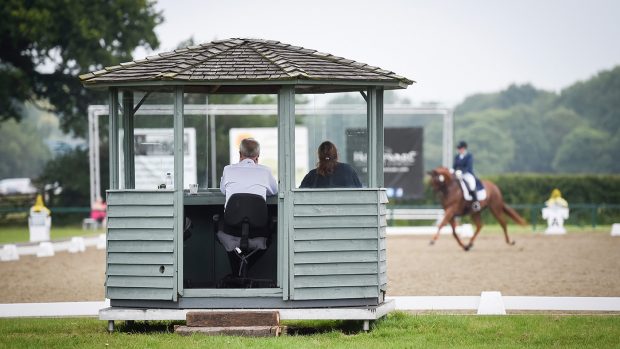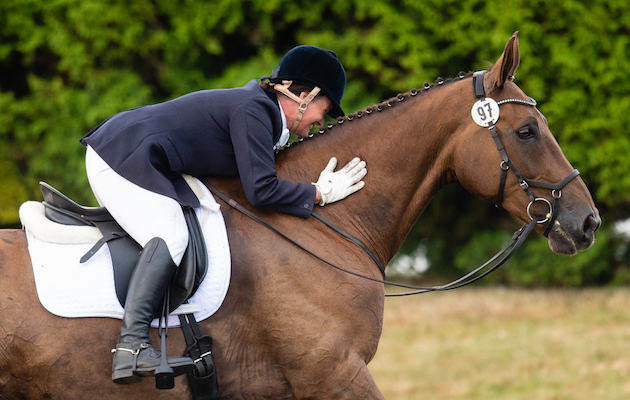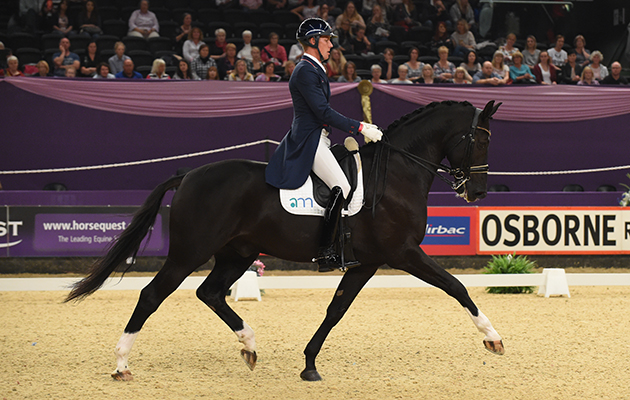We asked international dressage judge, rider and trainer Isobel Wessels to highlight the moments in a test where she believes many classes are won or lost.
Here she shares her valuable tips to help you get the most out of your entry and halt.
The entry and halt
The entry and halt sets the scene, so nailing this movement will make a good initial impression.
When you don’t have the luxury of warming up outside the arena, you can often trace a bad halt back to the horse not being turned correctly at A.
The rider either overshoots the centre line with too much neck bend and lets the horse’s quarters fall in or out, or doesn’t complete the turn, meaning the quarters are not following the shoulders.
Both these faults mean the entry cannot be straight, which leads to a low mark early on and the almost certainty of a ragged halt.
The key to making a good turn at A is to think about riding the horse straight into both reins with only a small amount of flexion at the poll to control the bend.
Don’t push the horse sideways, as you will cause his legs to cross. Instead, think about turning just a little bit with every stride, lifting your ribcage and looking ahead to C.
It is easy for the horse to drop behind the leg and start anticipating the halt, so at home practise plenty of turns, but do not halt every time.
Instead, use half-halts so he learns to accept the preparation, but keeps moving forwards.
If you have to chase your horse down the centre line to prevent him jamming on the brakes, you are advertising the fact that he is behind your leg.
Try this at home: with a fidgety horse that is reluctant to stand, avoid riding abruptly to halt — instead ask for trot to walk to trot on the centreline. This will give the horse confidence and help develop softness in his back and neck.
The halt at the end of the test comes just before the judge fills in the collective marks, which are usually worth double. Two bad halts in a test will affect the submission marks.
Once halted, the horse has to stay still and balanced. If no immobility is shown, you’re likely to get a very low mark.
To earn an eight or above at the higher levels, the horse’s hindlegs have to be underneath him and “closed” — together and closer to his front legs.
From this closed position, the horse will find it easier to move into a clear
trot rather than making a progressive transition through walk.
Exercise
There are many ingredients needed to achieve consistently square halts, but one of the most important is to have control over the horse’s steps.
From trot, ride a downward transition to halt, but then ask the horse to creep forward with tiny walk steps, controlling each one with your seat and leg.
The horse mustn’t feel trapped, so keep your hands soft and forward.
Once you can influence the horse’s steps with your seat and leg aids, you can keep asking for subtle adjustments until his hindlegs come under him and he is square in the “closed” position.
Repetition is the key, so be fussy about the way your horse stands at all times. If you always insist that he stops square with his hindlegs underneath him, this will become the norm.
Tip
It helps to think of the centre line as a railway track — if the horse isn’t in front of the leg and level in both reins, you risk derailing the train.
To read the full feature about nailing your dressage marks, including advice on getting transitions within the pace right and getting into and out of half-pass, see the current issue of H&H (22 November 2012)
Read all the latest dressage news



